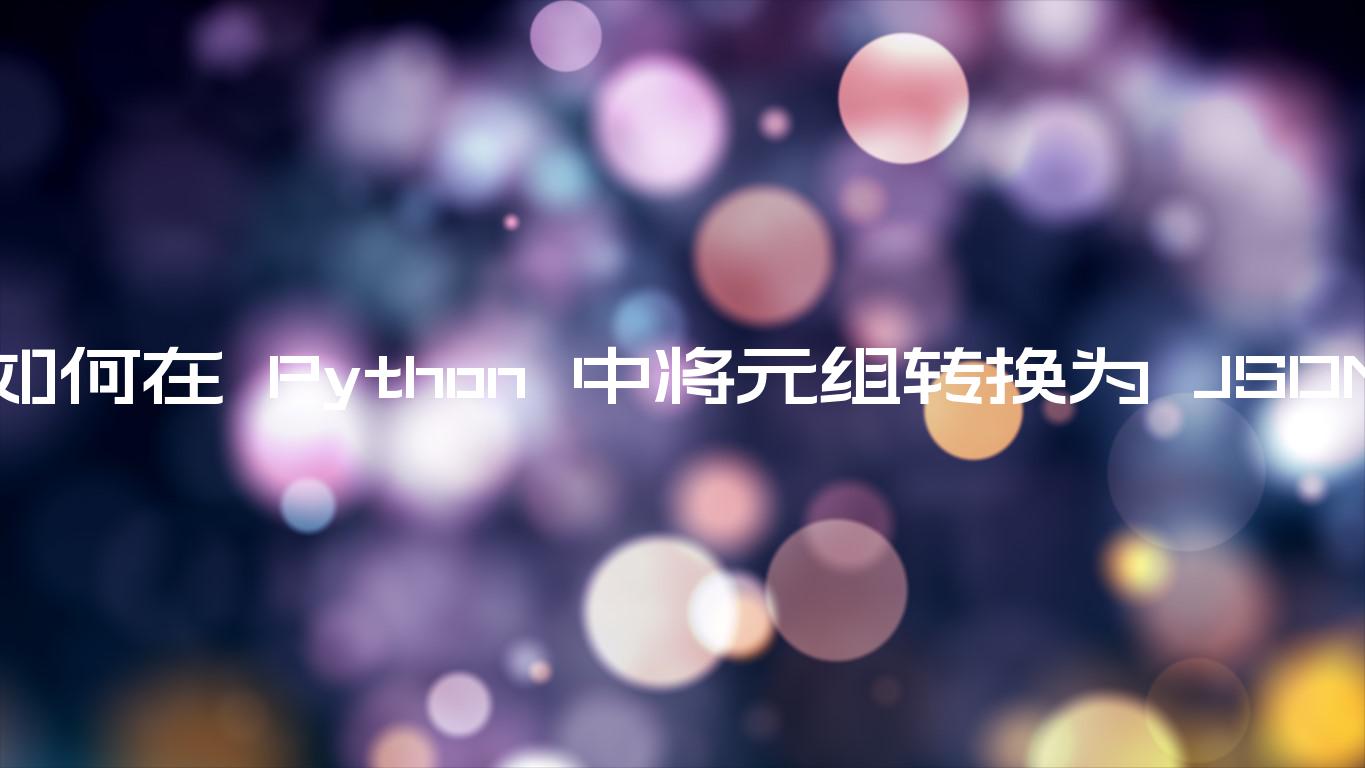在 Python 中将元组转换为 JSON
How to convert a Tuple to JSON in Python
使用该json.dumps()方法将元组转换为 JSON,例如
json_str = json.dumps(my_tuple). 该json.dumps()方法将 Python 对象转换为 JSON 格式的字符串,并支持元组到 JSON 数组的转换。
主程序
import json my_tuple = ('one', 'two', 'three') json_str = json.dumps(my_tuple) print(json_str) # 👉️ '["one", "two", "three"]' print(type(json_str)) # 👉️ <class 'str'>
我们使用该json.dumps方法将元组转换为 JSON 字符串。
json.dumps方法将 Python 对象转换为 JSON 格式的字符串。
Python 元组是 JSON 可序列化的,就像列表或字典一样。
该类JSONEncoder默认支持以下对象和类型。
| Python | JSON |
|---|---|
| 字典 | 目的 |
| 列表,元组 | 大批 |
| 海峡 | 细绳 |
| int、float、int 和 float 派生枚举 | 数字 |
| 真的 | 真的 |
| 错误的 | 错误的 |
| 没有任何 | 无效的 |
将元组(或任何其他本机 Python 对象)转换为 JSON 字符串的过程称为序列化。
然而,将 JSON 字符串转换为本机 Python 对象的过程称为反序列化。
应该注意的是,Python 元组被转换为 JSON 数组,就像列表一样。
当您将 JSON 字符串解析为本机 Python 对象时,您会得到list
回报。
主程序
import json my_tuple = ('one', 'two', 'three') # 👇️ convert tuple to JSON json_str = json.dumps(my_tuple) print(json_str) # 👉️ '["one", "two", "three"]' print(type(json_str)) # 👉️ <class 'str'> # -------------------------------- # 👇️ parse JSON string to native Python object parsed = json.loads(json_str) print(parsed) # 👉️ ['one', 'two', 'three'] print(type(parsed)) # 👉️ <class 'list'>
请注意,我们list在解析 JSON 字符串后得到了一个对象。这是因为列表和元组对象在序列化时都会转换为 JSON 数组。
在解析 JSON 字符串后,您可以使用tuple()该类将列表转换为元组。
主程序
import json my_tuple = ('one', 'two', 'three') json_str = json.dumps(my_tuple) print(json_str) # 👉️ '["one", "two", "three"]' print(type(json_str)) # 👉️ <class 'str'> # -------------------------------- # 👇️ convert to tuple parsed = tuple(json.loads(json_str)) print(parsed) # 👉️ ('one', 'two', 'three') print(type(parsed)) # 👉️ <class 'tuple'>
该示例使用tuple()该类来转换list我们在解析 JSON 字符串后得到的。
元组与列表非常相似,但实现的内置方法较少并且是不可变的(无法更改)。
